How does accelerated climate change in the Arctic affect the ecosystems of Greenlandic Fjords? This is the central question which the GreenFjord project funded by the SPI Flagship Initiative aims to answer in the upcoming four years. Therefore each of the six individual research clusters within the project focuses on a specific scientific field to investigate how accelerated glacier discharge and soil erosion impacts the fjords’ nutrient cycle, food web, cloud formation and finally local livelihoods.
One of these research clusters focusing on the cryospheric component started the first field season of the GreenFjord project in mid-July 2022. Marking the start of a four-year project with two main field seasons in summer 2023 and 2024, this year’s field campaign had the goal to scout the Southwest Greenlandic region that we chose for our GreenFjord studies and to carry out first measurements.
Southwest Greenland’s landscape is characterized by deep fjords and steep mountains. Streets only exist within villages and thus regional transportation relies on boats. Therefore, after landing with the airplane in Narsarsuq, our small 3-person team went by boat to Qaqortoq, the largest town of the region. Qaqortoq will be an important logistic base for the next years, due to its frequented harbor with the headquarter of a local boat and ship charter company and its helicopter base. All our equipment for this year’s field campaign also arrived in Qaqortoq, where we prepared it for the helicopter transport to our main field site.
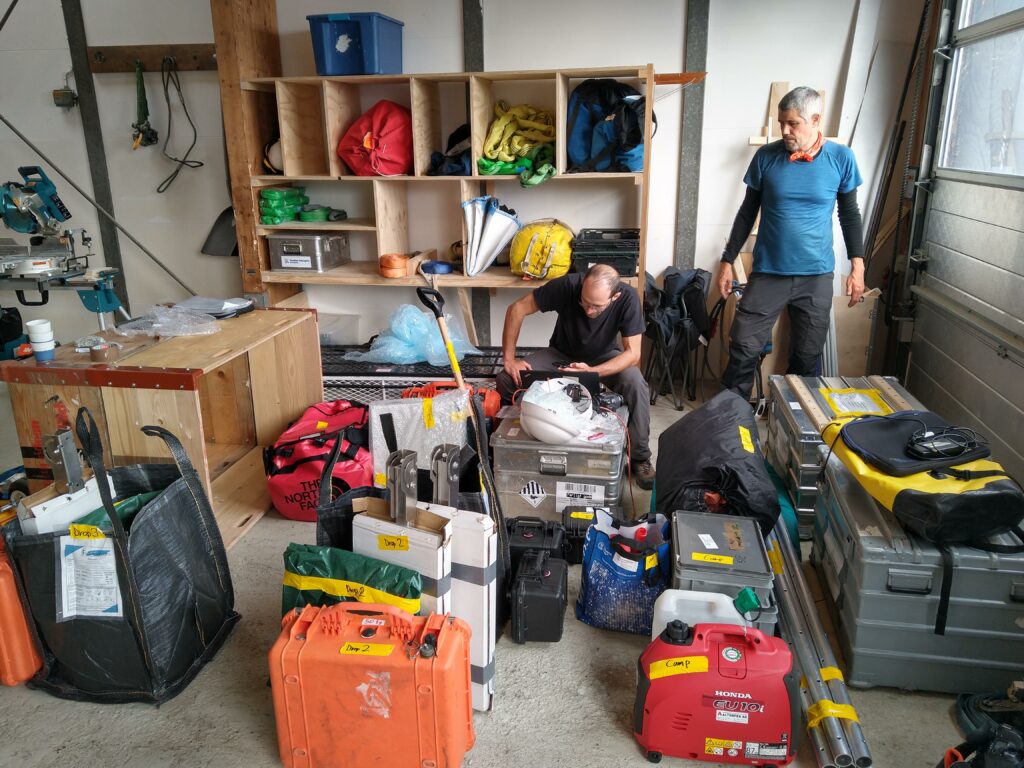
However, before flying there, we continued our scouting tour by taking a boat to Igaliku, a small village at the end of the Igalikup Kangerlua fjord into which no tidewater glaciers lead. Glacial runoff is exclusively guided via land into the fjord leading to water stratification that is dominated by water salinity with warm low saline water at the surface and cold and saline water at depth. These fjords with no freshwater input from tidewater glaciers are of special interest in the GreenFjord project, because they establish the state that will eventually be reached once calving fronts of tidewater glaciers retreated that far inland that they lose contact with the ocean. As, due to global warming, almost all tidewater glaciers in Greenland are currently retreating, the comparison between fjords with and without tidewater glaciers gives us insights into the environmental development that Greenland’s fjords will undergo once tidewater glaciers suddenly transform to land terminating glaciers. On board the boat to Igaliku we measured vertical temperature, salinity and turbidity profiles at various locations in the fjord from the water surface down to the seafloor.
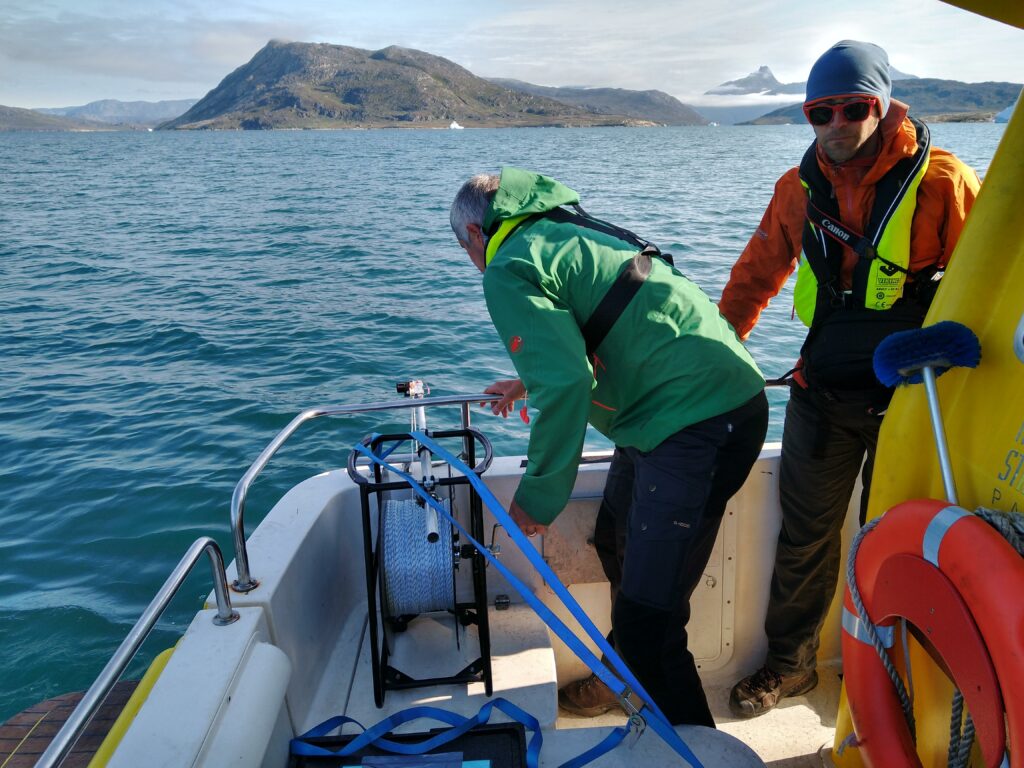
After scouting the region around Igaliku for suitable river gauging locations, we hiked to the neighboring Tunulliarfik fjord , where a boat picked us up and brought us back to Narsarsuaq. This former US military base establishes a basis of the GreenFjord field investigations due to its international airport with flights from and to both Copenhagen and Reykjavik. Narsarsuaq is also the place, where the main fieldwork of our 3-person Cryosphere-Cluster team started. As the name implies, the Cryosphere-Cluster’s field site locates where water in its frozen state is abundant, namely at the calving front of Qajuuttap Sermia, a tidewater outlet glacier of the Greenland Ice Sheet. Calving fronts of tidewater outlet glaciers are sensitive systems that dynamically react on changing atmospheric and oceanic conditions. Understanding physical processes that act on calving fronts is crucial to predict their development in a warming climate with impacts on the fjords’ ecosystems.
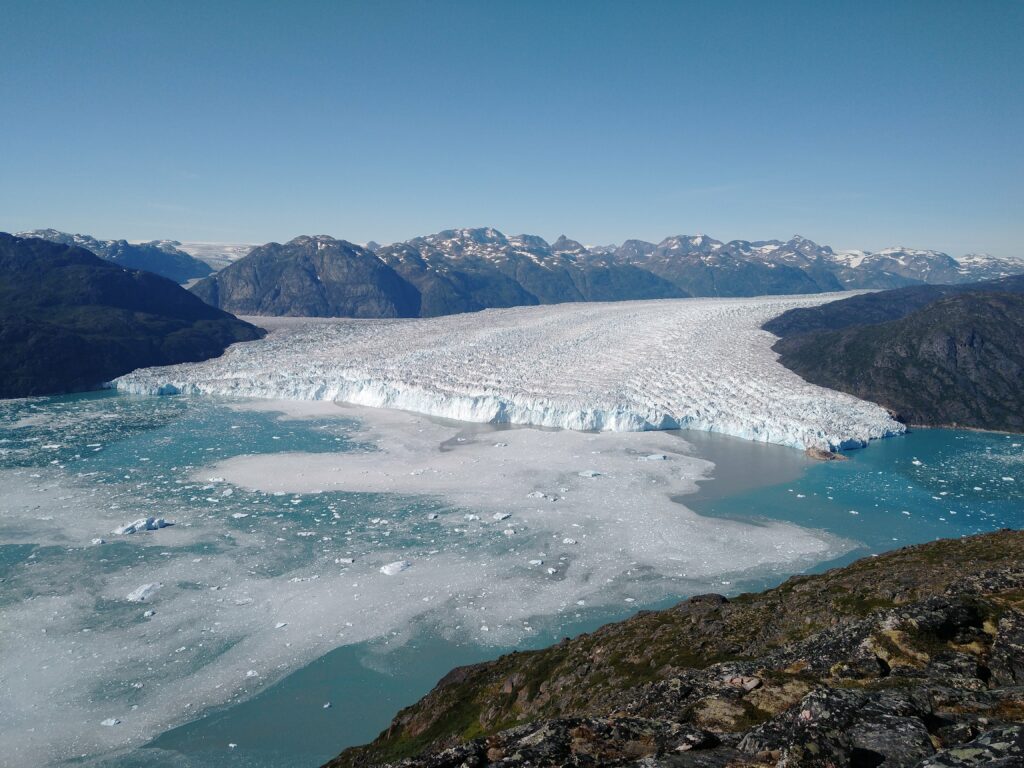
From Narsarsuaq we flew by helicopter to the calving front of Qajuuttap Sermia and distributed most of our measurement equipment on the mountains left, right and opposite of the calving front and our camping equipment close to the shore at a bay east of the glacier. Shortly after arriving, we recognized that this glacier offers an optimal study site to us. The persistent rumbling of calving icebergs ensured us that the ice-ocean interface of Qajuuttap Sermia is highly dynamic and therefore ideal to monitor transient physical processes acting on it. During our week-long stay at our camp, we installed three time-lapse cameras that will take hourly pictures of the glacier, its calving front and the fjord for the entire year. With these pictures we will be able to quantify the ice flux, monitor iceberg calving and study the motion of icebergs in the fjord which gives us an idea about the fjord’s currents at different depths.
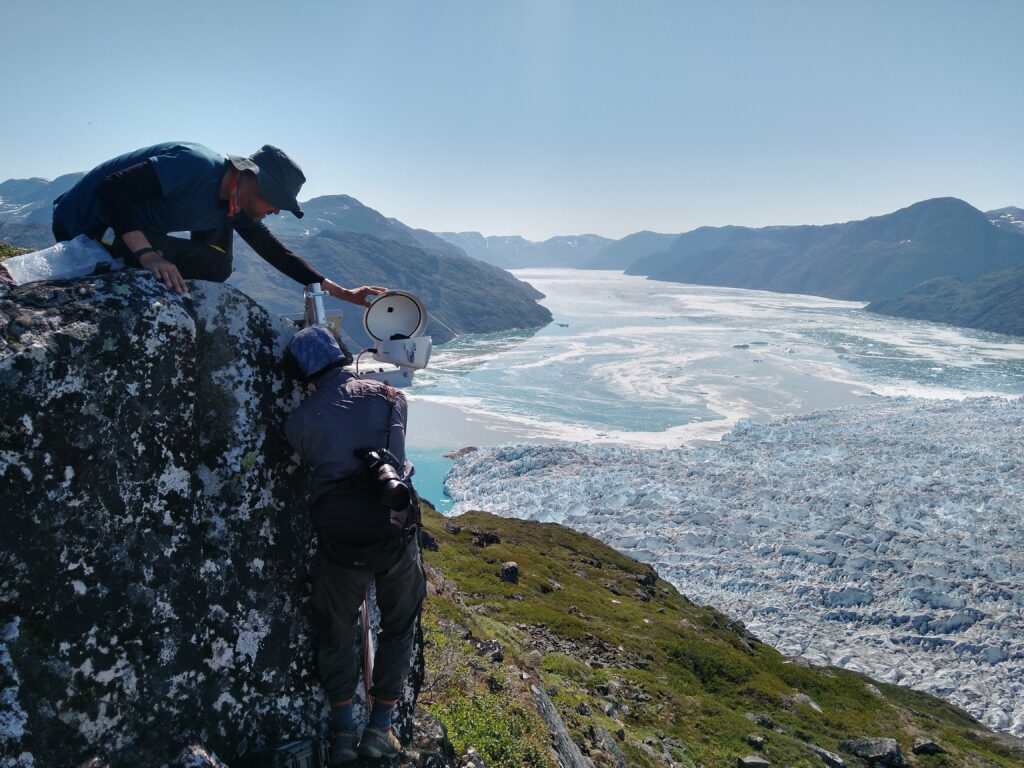
Furthermore we installed three broadband seismometers around the calving front. With them, we aim to quantify the iceberg calving activity, weigh icebergs and monitor subglacial discharge and glacier sliding by hydraulic and stick-slip sliding tremor.
In the bay east of the calving front, we also installed a wave gauge that already showed its capability to record small tsunamis which are caused by iceberg calving.
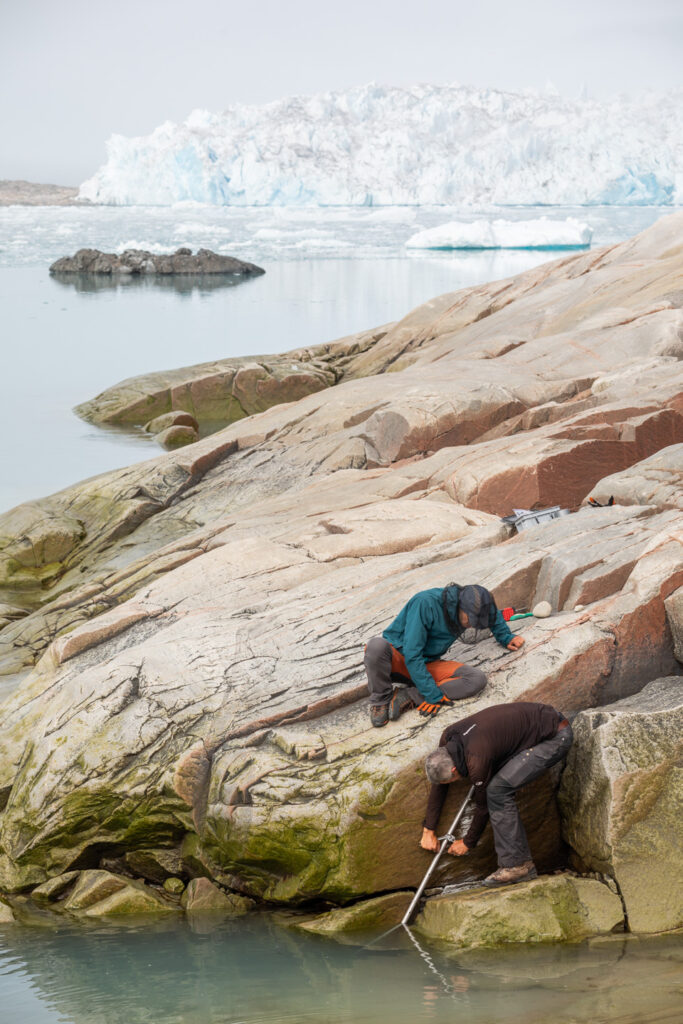
Finally, we installed a meteo station at the shore.
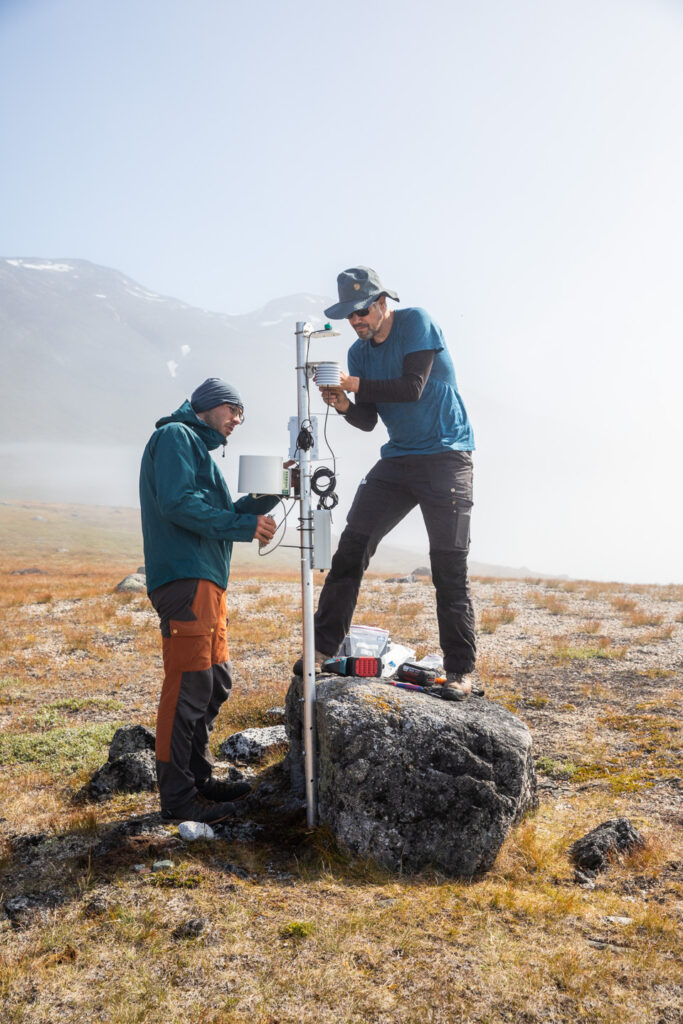
All these deployments set the foundation for the next two summer field seasons, when we will investigate the almost 4km wide calving front of Qajuuttap Sermia with interferometric radar , ocean-bottom-seismometers and distributed fiber-optics sensing in order get a highly spatio-temporally resolved image of physical processes at the ice-ocean-atmosphere interface.
One week after we arrived at the bay next to Qajuuttap Sermia, the Adolf Jensen, a 30m long vessel, that is capable of navigating through water packed with icebergs, picked us up from the shore and welcomed our 3-person Cryosphere-Cluster team on board. With the Adolf Jensen, we sailed along the calving front, where we plan to deploy a subsea fiber-optic cable and ocean-bottom-seismometers in summer 2023 and we measured bathymetry and recorded temperature profiles. These measurements showed that, as expected, the temperature stratification in that fjord with its tidewater outlet glacier is completely different from the fjord where no tidewater glaciers were present. Instead of having a decrease of water temperature with depth, we measured zero-degree cold water at the surface and rising temperatures with depth, indicating that warm oceanic waters can reach the calving front at the seafloor and lead to enhanced submarine melt.
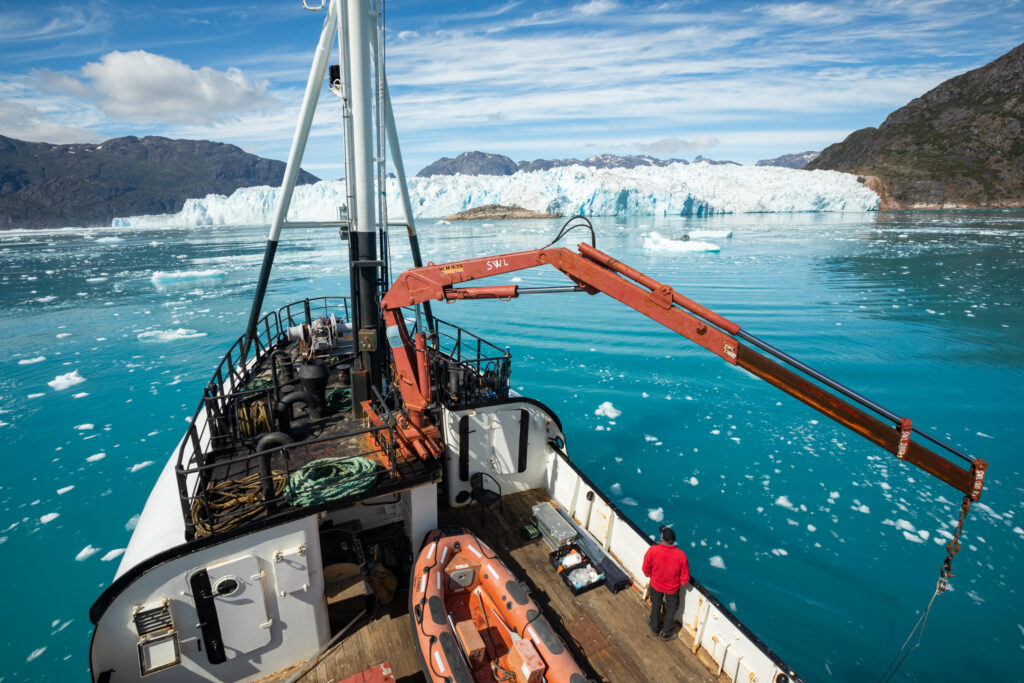
After taking additional continuous measurements of bathymetry and every few Nautic miles vertical temperature profiles, the Adolf Jensen brought us along the Sermilik fjord to Narsaq. There, we stayed at the Narsaq International Research Station, where we started a day-long excursion to Narsaq Brae, a small glacier in the mountains close to town where mass-balance measurements have been conducted in the 1980s. We retrieved some ablations stakes from that time and drilled new ones into the ice to continue the measurements from then.
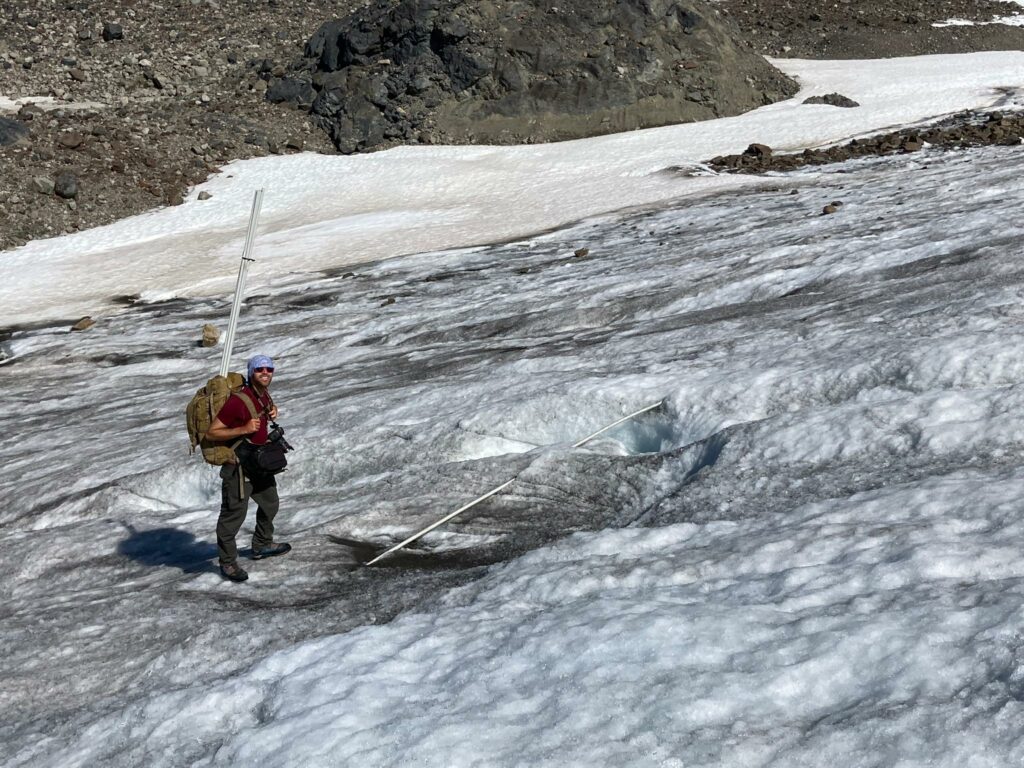
From Narsaq a small boat took us back again to Narsarsuaq, the place where our field campaign began. We took the airplane back to Switzerland, but our sensors remain on site to monitor the Qajuuttap Sermia and its neighborhood throughout the harsh winter until we come back next summer.

Dominik Gräff is a post-doctoral researcher at the Laboratory of Hydraulics, Hydrology and Glaciology, of the ETHZ and at the Department of Earth and Space Sciences at the University of Washington. He is involved in the Cryosphere research cluster of the GreenFjord project.
Header photograph: Installation of solar panels for the power supply of a seismometer. © Ethan Welty, all rights reserved